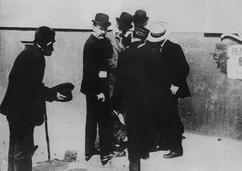
King Coal’s uneasy throne in America, 1870-1902.Īlterman, Eric, and Reed Richardson. Making coal a household name, 1835-1875 - Volume 3. Coal and the nation, 1790-1835 - Volume 2. January 9th chemical spill leaves 300,000 without water.Īdams, Sean P. 1,207 words, plus photo gallery, map graphics, and link to Eastman Safety Data Sheet. “Gaps are Wide in Chemical Testing, Regulation ”. For scholars of the region the study is a deep dive and for researchers of other coal regions in the state and elsewhere, it will serve as the definitive source for comparative industrial and labor histories.Includes lumber, iron & steel, oil & gas, hydraulic fracturing (fracking), automobile, chemical, hydroelectric, nuclear, glass, textile, livestock, mining, and tourist trade Industries labor unions and strikes highways, canals and river transportationĪchenbach, Joel. In addition, this study reveals mineworkers’ active-often violent, though ultimately futile- resistance to tenancy. This book’s purpose is to trace the origins of the pernicious system of leasing and subcontracting-when the owners of mineral rights got out of the mining business-and to trace the intricate, if not endemic, “culture of corruption” that these forms of tenancy spawned. In many ways, Anthracite Labor Wars takes as its start this devastating “end” of mining in the northern field. 3 : 458–59) was that the leasing system encouraged illegal mining in the quest for profits and in corruption among company officials and union leaders. A compelling argument made in Robert Wolensky et al.’s earlier book, The Knox Mine Disaster, Janu(1999) (reviewed in Pennsylvania History 69, no. The Knox Coal Company was the leaseholder of the River Slope mine from the Pennsylvania Coal Company and was but one of many lessees in an evolving corporate reorganization of access to mineral rights in Luzerne and Lackawanna counties.



Readers familiar with history of Pennsylvania anthracite coal mining in the twentieth century know of the Knox Mine disaster in 1959, when managers directed workers to illegally mine coal under the Susquehanna River, resulting in the flooding many Wyoming Valley shafts and galleries, and killing twelve people.


 0 kommentar(er)
0 kommentar(er)
